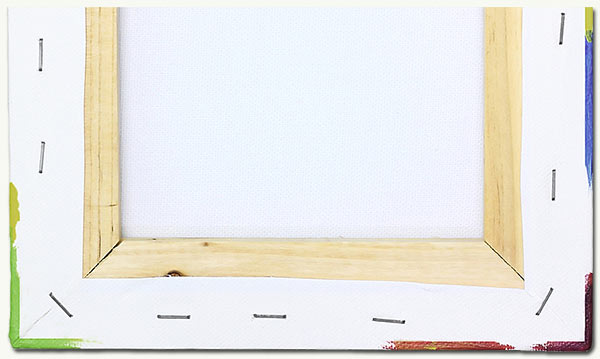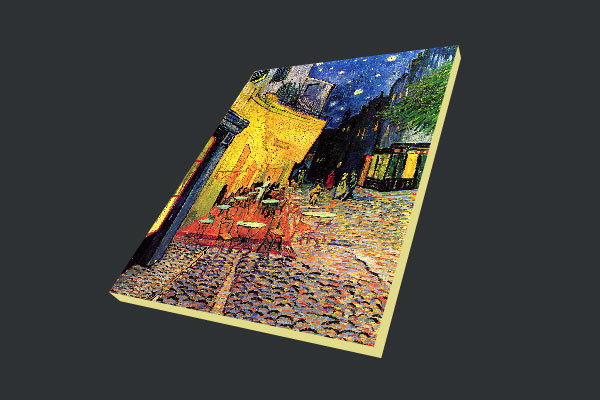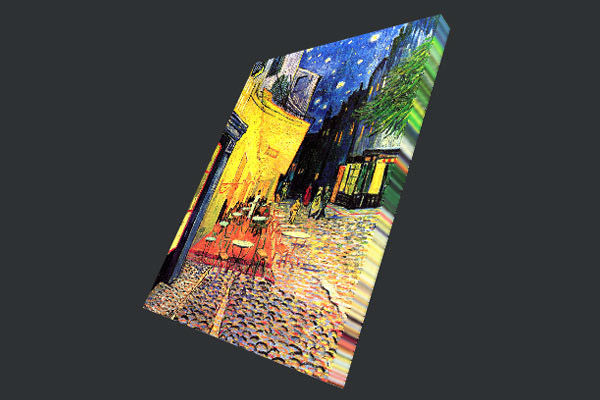|
Information→
Canvas WrappingBefore going through the methods of canvas wrapping used during canvas print production, the methods of canvas stretching should be addressed. For a long time the main method of canvas stretching was «museum type», which is when a canvas is fastened to the stretcher with iron cramps on the sides. The canvas wasn’t fastened to the back of the stretcher since it was covered by a frame. Currently, the most frequently used method of stretching is called «gallery type». This is when a canvas is fastened with iron cramps on the back of the stretcher. This method of stretching means that iron cramps on canvas prints do not attract attention the way they would with the museum method of stretching.
Back side of the stretched canvas print There are various styles of wrapping butts of a stretcher (i.e., the part of the canvas that covers the stretcher on the side). These styles are listed below, beginning with the most popular style and ending with the least popular: 1. Mirror image wrapThis wrap style has a mirror reflection of part of the image that is equal to the thickness of the stretcher. You should be careful when using this method and check whether any clear figures, faces, etc. are not located within the reflected area. But there are also advantages since the most aesthetically pleasing wrapping could be achieved, therefore creating an impression of a natural extension of the photo.
2. White, black, or other colorsWhen a white wrapping is selected, you are actually choosing no wrapping, meaning that the stretcher is only covered by the canvas. A custom color wrap is ideal if the image has a uniform background or a dominating color.
3. Blur extrusion wrapThis covers blurring of the image boundaries so that the edges of the image are stretched and blurred in order to achieve an impression of a gradual extension of the image.
Whatever method you choose, we recommend that you view the canvas print with other wrapping methods applied, as you may discover that the method you originally chose might not be ideal. Each picture is unique, which is why there might not be only one solution for each picture.
|
|






